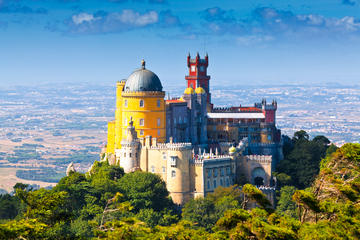Pena National Palace
TIME : 2016/2/22 13:49:31

Pena National Palace
Technically, UNESCO considers the entire cultural landscape of Sintra the World Heritage Site here, but the crown jewel is the royal Pena National Palace. Considered the greatest example of 19th-century Romanticism in the world, the palace sprawls on a hilltop high above Sintra, and can often be seen from Lisbon, 17 miles away. Commissioned by then-king Ferdinand II on the site of a ruined 15th-century monastery and completed in 1854, the fanciful red-and-yellow palace is an exotic mix of Gothic, Egyptian, Moorish and Renaissance style elements.
Designed by mining engineer and amateur architect Baron Wilhelm Ludwig von Eschwege as a summer house for the royal family, the interior of Pena features ornate stuccos, multi-patterned columns, Moorish-arched ceilings, and much of the original monastery’s chapel. The exterior is festooned with allegorical carvings, references to Biblical stories and religious icons, as well as lavishly painted Portuguese tiles. The most complete view of the palace complex, including an enormous, turreted clock-tower, can be glimpsed from the Queen’s Terrace.
Surrounding the palace is the 500-acre Pena Park, an organic jumble of trees and plants from around the globe. Fitting for a country well-versed in ocean-bound exploration, trees and ferns here hail from China, Australia, New Zealand, North America and more. The eclectic nature of this assembled forest heightens the exotic impression of the palace, completing the Romantic picture.
Portugal exiled its last royals in 1910, and the palace has been a national monument and museum ever since. Along with its neighboring landscape, Pena was declared a UNESCO World Heritage Site in 1995.
